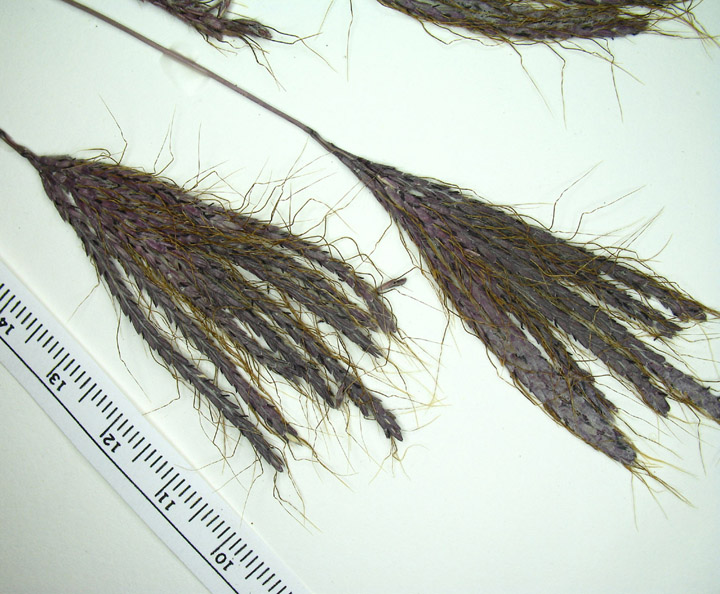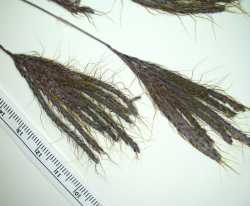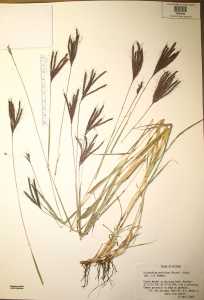Plants perennial; stoloniferous. Culms to 100 cm, decumbent, erect portions generally to 60 cm, often branched above the bases, glabrous beneath the inflorescences; nodes glabrous or short-pubescent. Sheaths glabrous; ligules 1-1.8 mm, truncate; blades 3-30 cm long, 2-7 mm wide, scabrous, sparsely pilose, hairs sometimes papillose-based. Rames 2-9, 2.5-7 cm, subdigitate, erect to ascending, bases without spikelets, glabrous, internodes ciliate on the margins. Sessile spikelets 2.5-5 mm long, 1-1.5 mm wide; lower glumes elliptic or oblong, sparsely pubescent below, apices obtuse, irregularly 2-3-toothed, 5-9-veined; upper glumes 3-veined; awns 1.3-2.2 cm, twice-geniculate. Pedicellate spikelets 2.5-5 mm, usually staminate. 2n = 20, 40.
Dichanthium annulatum is native to southeastern Asia and is a highly esteemed forage grass, especially in India. It is now established at scattered locations in Texas and Louisiana. 2009, February: The records for Florida have been deleted because Bruce Hanson and Richard Wunderlin, after diligent searching were unable to find any specimens documenting the presence of the species in the state.







